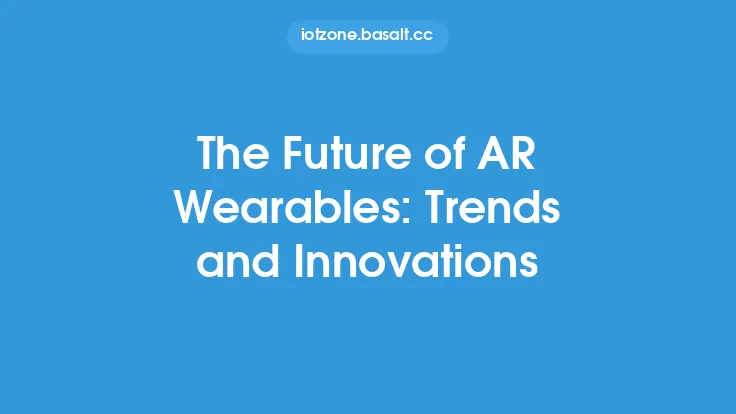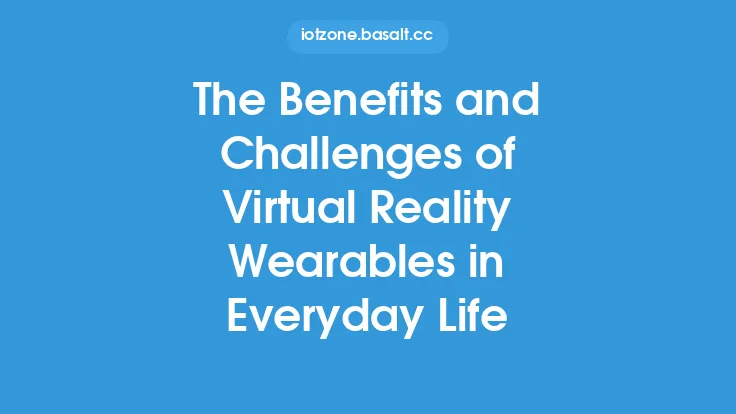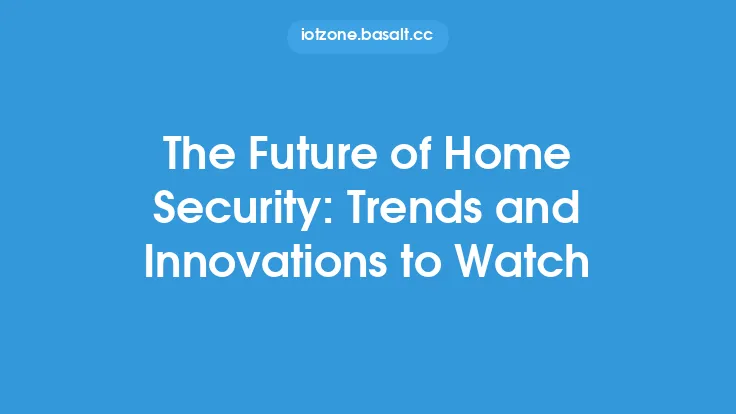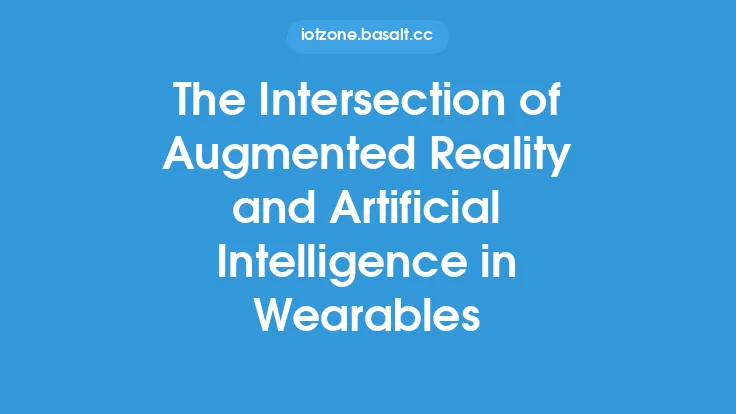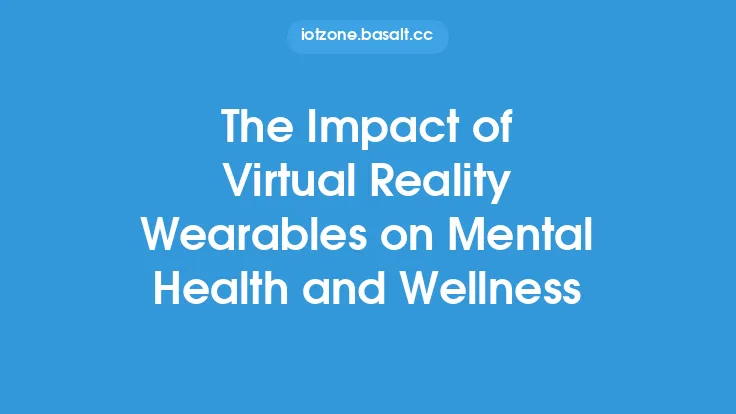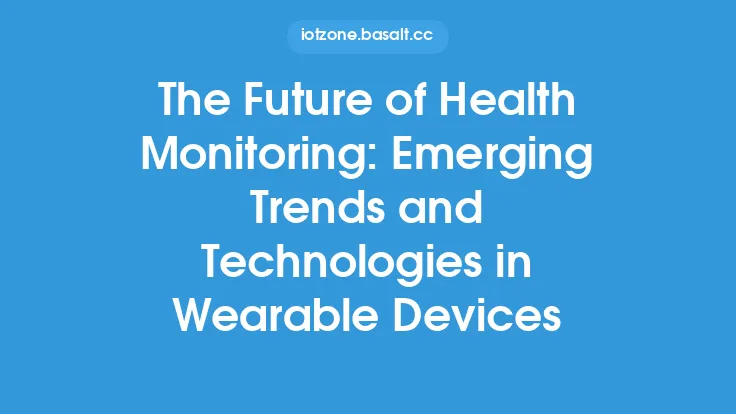The world of virtual reality (VR) wearables is rapidly evolving, with advancements in technology and innovations in design leading to a wide range of applications across various industries. As we look to the future, it's essential to examine the trends and predictions that will shape the landscape of VR wearables. In this article, we'll delve into the key developments that will influence the growth and adoption of VR wearables, from improvements in display technology to the integration of artificial intelligence (AI) and the Internet of Things (IoT).
Advancements in Display Technology
One of the primary factors driving the advancement of VR wearables is the development of high-resolution displays. The current generation of VR headsets relies on organic light-emitting diode (OLED) or liquid crystal on silicon (LCoS) displays, which provide a high level of visual fidelity. However, future VR wearables are expected to incorporate more advanced display technologies, such as micro-LED or field sequential color (FSC) displays. These technologies promise to deliver even higher resolutions, faster refresh rates, and improved color accuracy, resulting in a more immersive and engaging VR experience.
Integration of Artificial Intelligence and Machine Learning
The integration of artificial intelligence (AI) and machine learning (ML) is expected to play a significant role in the future of VR wearables. AI-powered algorithms can be used to enhance the VR experience by providing personalized recommendations, predicting user behavior, and optimizing system performance. Additionally, ML can be used to improve the accuracy of tracking systems, allowing for more precise movement tracking and gesture recognition. The incorporation of AI and ML will also enable the development of more sophisticated VR applications, such as virtual assistants and intelligent avatars.
The Role of the Internet of Things (IoT)
The Internet of Things (IoT) is expected to have a profound impact on the development of VR wearables. As more devices become connected to the internet, VR wearables will be able to interact with a wide range of devices and systems, enabling new applications and use cases. For example, VR wearables could be used to control smart home devices, interact with virtual objects, or access remote services. The integration of IoT technology will also enable the development of more sophisticated VR applications, such as virtual try-on and virtual product demonstrations.
Advances in Tracking and Navigation
Tracking and navigation are critical components of the VR experience, and advancements in these areas are expected to have a significant impact on the future of VR wearables. Next-generation VR headsets are expected to incorporate more advanced tracking systems, such as inside-out tracking or markerless tracking, which will provide more precise movement tracking and gesture recognition. Additionally, the development of more sophisticated navigation systems, such as those using computer vision or lidar technology, will enable more seamless and intuitive interaction with virtual environments.
The Rise of Standalone VR Headsets
Standalone VR headsets, which do not require a PC or console to operate, are expected to become increasingly popular in the future. These headsets will provide a more convenient and accessible VR experience, allowing users to enjoy VR content without the need for a separate device. The development of standalone VR headsets will also enable new applications and use cases, such as virtual training and education, and will provide a more cost-effective solution for businesses and consumers.
The Importance of Content Creation
The success of VR wearables will depend on the availability of high-quality content, and the development of new content creation tools and platforms will be critical to the growth of the VR industry. The creation of more sophisticated content creation tools, such as those using AI or ML, will enable developers to create more engaging and interactive VR experiences. Additionally, the development of new content distribution platforms, such as those using cloud-based technology, will provide more convenient and accessible ways for users to access and enjoy VR content.
The Future of VR Wearables in Enterprise and Industry
The use of VR wearables in enterprise and industry is expected to become increasingly prevalent in the future. VR wearables will be used to enhance training and education, improve productivity and collaboration, and provide new ways for businesses to interact with customers and clients. The development of more sophisticated VR applications, such as those using AI or ML, will enable businesses to create more immersive and engaging experiences, and will provide new opportunities for innovation and growth.
The Impact of 5G and Edge Computing
The advent of 5G networks and edge computing will have a significant impact on the future of VR wearables. The increased bandwidth and reduced latency provided by 5G networks will enable more seamless and immersive VR experiences, and will provide new opportunities for cloud-based VR applications. The development of edge computing technology will also enable more sophisticated VR applications, such as those using AI or ML, and will provide more convenient and accessible ways for users to access and enjoy VR content.
The Role of Augmented Reality (AR) in VR Wearables
Augmented reality (AR) is expected to play a significant role in the future of VR wearables. The integration of AR technology will enable VR wearables to provide more interactive and immersive experiences, and will provide new opportunities for innovation and growth. The development of more sophisticated AR applications, such as those using AI or ML, will enable VR wearables to provide more personalized and engaging experiences, and will provide new ways for businesses to interact with customers and clients.
Conclusion
The future of VR wearables is exciting and rapidly evolving, with advancements in technology and innovations in design leading to a wide range of applications across various industries. As we look to the future, it's essential to examine the trends and predictions that will shape the landscape of VR wearables. From improvements in display technology to the integration of AI and IoT, the development of more sophisticated VR applications and content creation tools will be critical to the growth and adoption of VR wearables. As the VR industry continues to evolve, we can expect to see new and innovative applications of VR wearables, and a more immersive and engaging VR experience for users.
